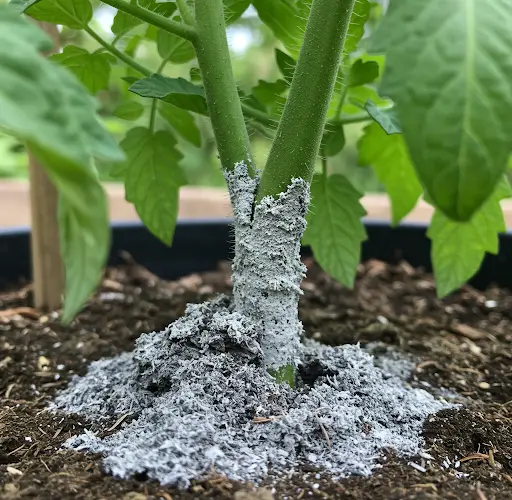Wood Ash: The Garden Fertilizer Hiding in Plain Sight
In the world of gardening, sometimes the most powerful tools come from the simplest, most overlooked sources. One such secret weapon? Wood ash—a natural, mineral-rich byproduct of burning untreated wood that can work wonders for your garden when used properly.
If you’re striving for a lush, productive garden, wood ash might just be the missing piece in your organic fertilizing toolkit. It’s easy to use, completely free, and packed with nutrients plants crave. Let’s explore how this humble material can transform your soil and how to use it correctly for the best results.
Why Wood Ash Is a Hidden Treasure for Gardeners
When wood burns, the fire consumes the carbon-based material, leaving behind a residue that’s rich in essential minerals. These minerals—especially potassium, calcium, and magnesium—are incredibly beneficial for plants.
-
Potassium helps with strong root development, flowering, and fruiting.
-
Calcium strengthens cell walls and supports overall plant structure.
-
Magnesium plays a key role in photosynthesis and nutrient uptake.
Unlike many synthetic fertilizers that offer only a narrow spectrum of nutrients, wood ash provides a wide array of naturally occurring minerals in a slow-release form, making it a gentle yet effective option for building up long-term soil fertility.
Sourcing the Right Wood Ash
To get the most out of wood ash, freshness and purity matter.
-
Use only ashes from natural, untreated wood. Avoid ash from painted, stained, pressure-treated, or composite wood, as these can introduce toxic substances into your soil.
-
Aim for variety. A mix of hardwood and softwood ash is ideal, and ash from small twigs and branches is particularly rich in minerals.
-
Keep the ash dry. Wood ash that’s been exposed to rain loses a significant portion of its water-soluble nutrients, particularly potassium. Always store ash in a sealed, dry container until you’re ready to use it.
Making a Liquid Fertilizer With Wood Ash
One of the easiest and most effective ways to apply wood ash in the garden is to create a wood ash tea—a liquid fertilizer made by soaking wood ash in water. Here’s how to make it:
Ingredients:
-
1 part wood ash
-
5 parts non-chlorinated water
Instructions:
-
Take a clean 5-gallon bucket.
-
Add 1 gallon of fresh, dry wood ash to the bucket.
-
Fill the rest of the bucket with 4 gallons of non-chlorinated water. Rainwater is ideal, but tap water left to sit for 24 hours will also work.
-
Stir the mixture thoroughly to help dissolve the ash into the water.
-
Let it sit for a few hours to allow the nutrients to fully diffuse into the water.
-
Stir again before using.
This solution is now ready to be used as a weekly soil drench or watering solution for a wide range of garden plants.
Plants That Thrive With Wood Ash Fertilizer
Some plants are especially responsive to the nutrients in wood ash:
-
Alliums like garlic, onions, and leeks
-
Tomatoes, especially during flowering and fruiting stages
-
Leafy greens such as spinach, lettuce, and kale
-
Brassicas including broccoli, cabbage, and cauliflower
Avoid using wood ash fertilizer around acid-loving plants such as blueberries, rhododendrons, or azaleas, as they prefer more acidic soil conditions.
Addressing Common Concerns: pH Myths
One common concern is whether wood ash will raise the soil pH too much, especially in already alkaline soils. While it’s true that wood ash has an alkaline effect, the impact on pH is often less significant than people think, especially when used in a diluted form or when combined with other organic fertilizers.
When applied moderately—such as once a week as a diluted liquid fertilizer—it’s unlikely to throw off your soil’s balance. Still, for long-term use, it’s always a good idea to test your soil’s pH annually to stay informed.
Combining Wood Ash With Other Fertilizers
Wood ash works best when used in combination with other natural fertilizers:
-
Compost adds organic matter and microbial life to the soil.
-
Fish fertilizer or compost teas offer additional nitrogen and microbial diversity.
-
Bone meal or rock phosphate can provide extra phosphorus if needed.
By rotating or layering these inputs, you can provide your plants with a well-rounded nutrient profile that supports strong, sustained growth.
Final Thoughts
Wood ash is one of nature’s most underrated gifts for gardeners. It’s free, easy to make into a powerful liquid fertilizer, and provides a broad spectrum of minerals that help build healthy, fertile soil. With proper use, it can become a key part of a low-cost, sustainable gardening routine.
So next time you have a fire or access to natural wood ash, don’t toss it—put it to work in your garden. You’ll soon see the difference in your plants’ health, growth, and productivity.



